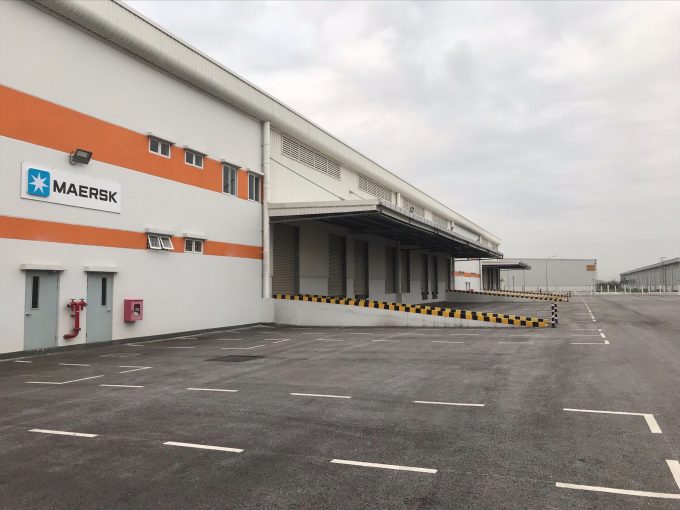Cooling demand increases warehousing vacancies, with rents inching down
Cooling demand has ended the long run of increasing warehousing costs and nudged the average ...

As import and export demand surges, Maersk has expanded its warehousing footprint in Vietnam.
The company has opened two new contract logistics facilities in Binh Duong, 25km from Ho Chi Minh City, and a third in Bac Ninh, close to Hanoi, creating an additional 38,000sq metres of warehousing space.
Maersk has 11 other self-managed facilities in Vietnam and said the new contract logistics capacity would “improve the inventory management experience for clients from Europe, Japan, Korea, Taiwan and Vietnam”.
The new Binh Duong distribution centres will “support substantial trade growth in southern Vietnam”, it said, particularly for customers in the tech, FMCG and retail sectors.
In the north, Maersk has also more than doubled its footprint in Bac Ninh, to 29,000sq metres, 23km from the capital, Hanoi, and 120km from the relatively new deepsea container port of Hai Phong, which is enjoying strong volume growth thanks to direct calls to the US.
Marco Civardi, Maersk MD for Vietnam, Cambodia & Myanmar, told The Loadstar the demand for warehousing in Vietnam had increased during the pandemic.
“Container shortages and vessel omissions due to Covid-19 have created a strong impact on international freight, generating increased demand for storage,” he explained. “We’ve also noticed strong growth in e-commerce and last-mile delivery.
“While landlords are trying to maximise yields by shifting away from dry-lease to self-operated models, substantial investments in industrial and logistics land are ongoing. In fact, warehouse supply from new property developers was up 25% year on year in north Vietnam last year, and up 28% in the south.”
Mr Civardi said Maersk had seen some organic volume growth from clients in Vietnam but “a larger ratio” could be attributed to manufacturing shift from China.
He added: “The Covid situation may even accelerate the shift, although even without the pandemic effect, it’s fair to say Vietnam already displayed enough advantages in terms of geographic location, labour force age, ‘can-do’ attitude, wage competitiveness and political stability.
“All these elements act as a magnet for foreign investment into the country, with both Chinese and international firms relocating.”
Meanwhile, as well as scarce container shipping capacity, airfreight space also continues to be a challenge.
“Airfreight demand out of Vietnam, particularly to North America, continues to be strong, especially for products within the technology, e-commerce and retail sectors,” said Mr Civardi.
“Furthermore, it seems there is no fixed summer schedule available, due to passenger flight cancellations, yet forecast demand from China remains strong, contributing to further shortages in capacity and high rates in the market.”
Comment on this article